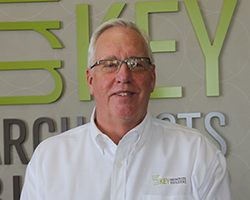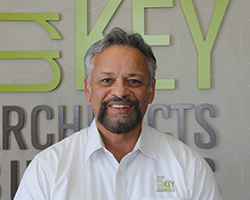
Even before the pandemic, bank customers had increasingly migrated toward online and mobile banking products to conduct simple banking functions. The widespread temporary closure of bank lobbies in 2020, which linger in some areas today, has called into question the relevance of the brick-and-mortar branch, especially after banks successfully migrated much of their workforce to remote home offices. As the industry ponders its “new normal,” BankBeat reached out to bank architects around the Midwest to get their input. Here, CEO Scott Voigt and Sales Manager Joe Moorman of TurnKey Architects in Waterloo, Iowa, give their thoughts on how the last year might influence a bank’s use of space.
Q. Prior to the era of social distancing, we saw a move toward open office designs and collaborative workspaces. What is the future for this open-concept design in banking?
Scott Voigt: I think we’ll continue to see them. We’ve got some customers who think this virus has changed the way banks operate forever, and others who are thinking the changes won’t be that drastic. Opinions are all over the place. But if we are talking about spaces where people touch customers, privacy is still key. We’ll still see hoteling or bullpenning where six people share four private offices.
Q. We used to take infrastructure for granted, but we saw weather-related rolling blackouts disrupting life for a large swath of the country. What sort of contingency planning goes into your designs to help bankers ensure continued operations in the face of crises?
Scott Voigt: We did a bank a few years ago, a 22,000-square-foot, three-story building with an elevator, where the owner wanted everything backed up. That generator was roughly $150,000. But when you talk about generators … it has to have a self-sufficient fuel source. If a tornado comes through, you won’t have natural gas to run the generator. The bank I mentioned had a 200-gallon diesel fuel tank that would run that building for six or seven days.
Joe Moorman: If we get to be like Texas, with rolling blackouts for two weeks, the bank being down will be the least of peoples’ concerns.
Q. Are there unique strategies you see that are helping draw people back into banks?
Scott Voigt: My communications with people who are working from home [is] they hate it. The theme is the same: I don’t get as much done at home as I do in the office. People are ready for a return to normal.
Q. What’s it been like having to take public health into account as you embark on a new design? How are you learning new technologies and adapting your approach?
Scott Voigt: We partnered with Howard Industries to provide clients with poly acrylic shields. Early on, people were installing shields based on cost. But they found after spraying them with sanitizer every day for a few weeks, the shields clouded up. Ours use medical grade polymers. They are holding up.
Q. What trends do you see unfolding in bank architecture in the next 12-24 months?
Scott Voigt: NCR was pushing ITMs (Interactive Teller Machine) for inside the bank lobby; that trend didn’t last long. Maybe the ITM is a good idea at a college campus. I see a lot of banks using ITMs in drive-ups and that’s probably a better idea.
Joe Moorman: If you want to know the latest trend, ask the customer. They know the answer. Trends are always determined by how you serve your community. Trends work for a specific community in a specific place and time.
Q. There’s a narrative circulating that the branch is dying. What advice can you give bankers who are on the fence about remaking or updating a branch?
Scott Voigt: I’ve heard this for 20 years. The branch is evolving. Teller lines are slowly becoming a thing of the past. We have virtual tellers, loan officers accessible via video. Branches are smaller. But drive-ups have gone crazy. We finished a project in Marion, mostly a gut and remodel, where we expanded the drive-up by two lanes. I have two customers that both have walk-up tellers. It allows them to be open Saturdays, but it’s designed for security.
Joe Moorman: I’ve been at this since 1982 and I have seen nothing but the branch reinvent itself over and over again. Bricks and mortar outlives the skeptics. Even as the retail core gets smaller, branches evolve. At this point the only ones getting rid of branches are the big banks. I have not seen community bankers abandon their communities; they have evolved whatever way is necessary.
Q. How has the last year been for your firm?
Scott Voigt: “I’ve been at this since Jimmy Carter was president. In general, there are slowdowns every four years, and a steeper decline at the end of an eight year presidential incumbency. This last year was a perfect storm: Covid, an election, and family members shouting at one another. Everything has been shaky.”
Joe Moorman: We had a lot of resets. I had a customer who would have broken ground in March but they did a full reversal. Bankers don’t know what to keep, what to add, what the competition will be doing, or what the customers will do or want.

